Connoisseurs of high-quality tobacco understand that nothing compares to homegrown products. The Virginia 202 variety is so popular that it accounts for 70% of all cultivated tobacco. It is known for its low tar content and a unique, slightly sweet taste. Thanks to its vibrant color palette — ranging from lemon to orange — Virginia is often called "sunshine tobacco."
Today, we’ll explain how to grow Virginia 202 tobacco yourself.
Table of contents
What Is This Tobacco Variety?
Tobacco belongs to the genus of perennial and annual plants in the nightshade family, with leaves containing nicotine.
Today, Virginia 202 is the most widespread smoking tobacco variety, prized for its low tar content and pleasant flavor.
History of Origin and Spread
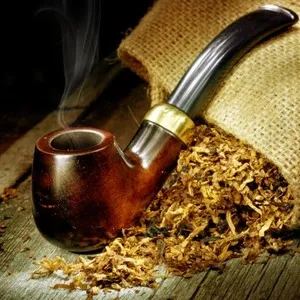 According to North American indigenous legends, tobacco has been known to humans for several millennia.
According to North American indigenous legends, tobacco has been known to humans for several millennia.
Back then, it was used not only for smoking but also as medicine and even in religious rituals. Tobacco smoke was believed to have magical properties — it was thought that by inhaling it, a person could communicate with the divine.
Before the discovery of the Americas, the plant was unknown to the world. It was Christopher Columbus who brought it from the New World to Europe.
The variety (Virginia tobacco) was named after the British colony of Virginia, where the first tobacco crop was harvested in 1612. By 1614, dried leaves from the colony were being shipped to London.
Did you know? The word "tobacco" comes from the name of the island of Tobago, where nicotine-rich plants grew.
Today, Virginia 202 tobacco is cultivated worldwide, except in Antarctica.
Features, Characteristics, and Description of the Variety
This variety is suitable for cultivation in all climatic zones. Its main feature is its minimal tar content.
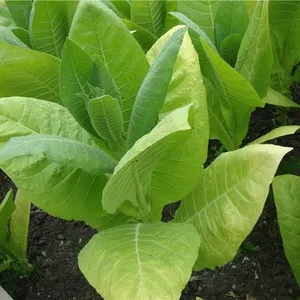 The plant has a light green color, with oval, elongated leaves that grow upward. The flowers are pale pink and medium-sized.
The plant has a light green color, with oval, elongated leaves that grow upward. The flowers are pale pink and medium-sized.
It has excellent yield: a single plant produces up to 25 leaves, each 30-35 cm long. This means you can harvest up to 1.5 kg per square meter. The taste is smooth, mild, and sweet due to its high sugar content (up to 20%). The smoke carries a subtle fruity aroma, making it perfect for cigarettes and pipes.
Beyond smoking, tobacco leaves are also used in cooking. The fragrant leaves add an unforgettable sweet-fruity note to meat and vegetable dishes. They are also used in homemade preserves — not only to extend shelf life but also to enhance flavor.
Where to Buy Seeds and Their Cost
Virginia seeds can be purchased at gardening stores or online retailers — demand for them is high. The price depends on the producer, typically ranging from €2 to €6 per pack of 20 seeds.
Growing Conditions
Virginia 202 tobacco can only be grown through seedlings. Throughout its growth cycle, the plant develops numerous suckers.
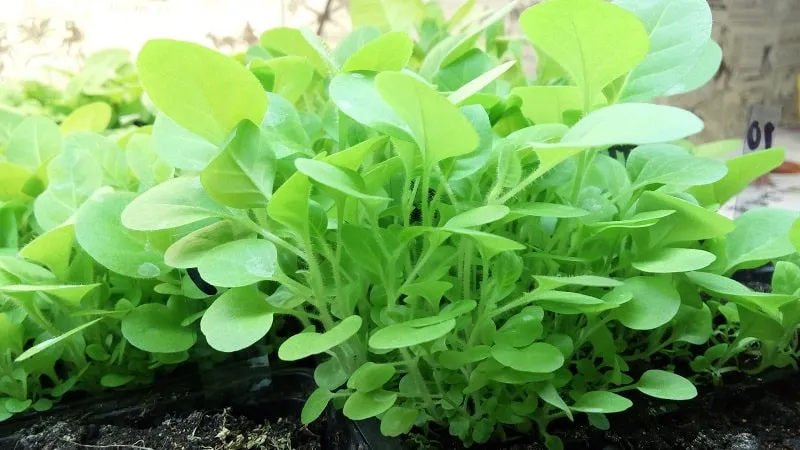
Requirements
Sowing begins in late March or early April. Seeds must be pre-germinated, or most will die in the soil. Insufficient light will cause seedlings to stretch and weaken, reducing their immunity.
Preparing Soil and Seeds, Sowing Seedlings
To germinate, place seeds on a damp cloth, keep them in a dark room for 1-2 days, and mist regularly to maintain moisture.
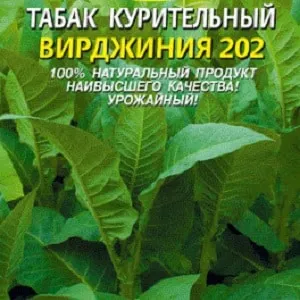 Use store-bought potting soil or prepare your own mix of turf and well-rotted compost (3:1 ratio). Sterilize the soil with hot potassium permanganate solution before filling seedling containers.
Use store-bought potting soil or prepare your own mix of turf and well-rotted compost (3:1 ratio). Sterilize the soil with hot potassium permanganate solution before filling seedling containers.
Disposable plastic cups are commonly used. Sterilize them, add drainage holes, and place gravel, sawdust, or crushed eggshells at the bottom.
Moisten the soil before sowing, place seeds on the surface, press lightly, and cover with soil. Cover with plastic wrap and keep at room temperature.
Note: Excess moisture increases the risk of fungal infections.
First Sprouts and Seedling Care
Seedlings emerge in about five days. Remove the plastic and place containers on a sunny windowsill. Provide at least 13 hours of light daily — use fluorescent lamps if needed.
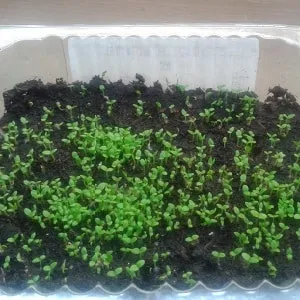 Water with warm, settled water using a fine spout. Keep the soil moist but not waterlogged. Loosen gently after watering.
Water with warm, settled water using a fine spout. Keep the soil moist but not waterlogged. Loosen gently after watering.
At 2-3 true leaves, transplant seedlings into larger containers. The plants adapt well. Two weeks later, feed with organic (e.g., diluted poultry manure 1:10) or nitrogen-rich fertilizer. Repeat if growth is slow.
Harden off seedlings a week before transplanting. Start with one hour outdoors, gradually increasing to 8-9 hours.
Transplanting to the Ground
Before transplanting, enrich the soil with compost (one bucket per square meter). Choose sheltered spots away from drafts or along fences.
Space holes 25 cm apart, 20 cm deep. Add compost to each, water, and transplant. Water again after planting.
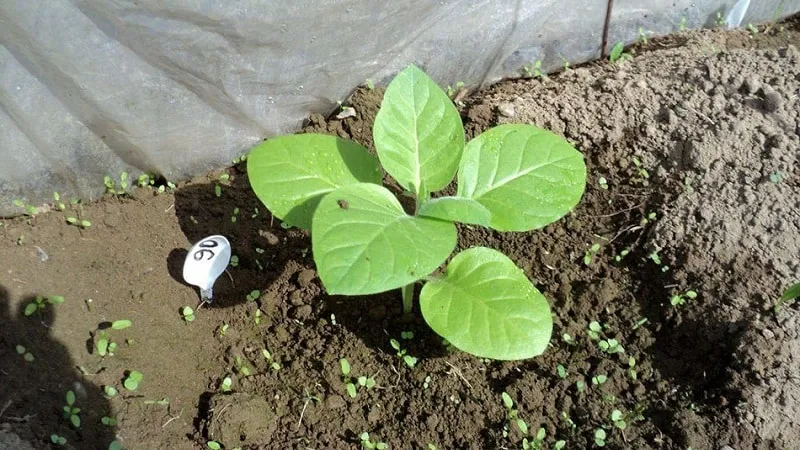
Ongoing Care
Watering frequency depends on climate. Water generously for the first three weeks, using only warm water. Monitor soil moisture — reduce watering if water pools.
After one month, plants develop organic tissues. Water every four days (10 L per square meter).
After two months, reduce watering as plants need less.
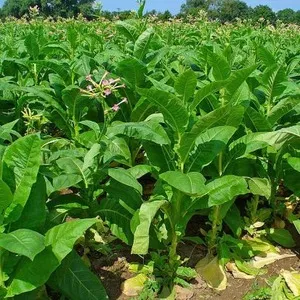 Weed and loosen soil after watering. Weeds harbor pests and fungi, increasing disease risk.
Weed and loosen soil after watering. Weeds harbor pests and fungi, increasing disease risk.
One week after transplanting, feed with nitrogen to boost leaf growth. Apply in the evening after watering.
During maturation, use a balanced mineral fertilizer (with phosphorus and potassium) or alternate with poultry manure (1:10). Fertilize at least twice.
Other Tobacco Varieties:
Fragrant and Flavorful "Havana" Tobacco for Cuban Cigar Lovers
One of the Best Aromatic Varieties — "Dubek"
Low-Maintenance, Mild Oriental Tobacco
Diseases and Pests
The variety is generally disease-resistant, but it can still suffer from powdery mildew and downy mildew.
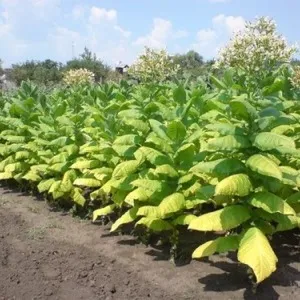 These fungal diseases spread rapidly in warm weather, first attacking leaves, then the whole plant. Up to 30% of crops can be lost. Treat with Zineb fungicide, and avoid overwatering.
These fungal diseases spread rapidly in warm weather, first attacking leaves, then the whole plant. Up to 30% of crops can be lost. Treat with Zineb fungicide, and avoid overwatering.
Tobacco thrips suck sap from leaves, reducing yield and spreading diseases. Remove weeds to deter them. If infested, use insecticides like Actara or Karate.
Note: Thrips affect over 400 plant species and are found throughout Europe.
Harvesting
Harvesting and drying begin in mid-July. Pick leaves from the lower tier first to avoid damage.
The main drawback is high chlorophyll content (which keeps leaves green). To remedy this, "sweat" the leaves for 3-4 days at 80-90% humidity and 25-35°C.
Further Processing
Before use, tobacco must be dried and fermented.
Drying
Spread leaves in layers up to 30 cm thick and dry for 10-12 hours. Then hang vertically (e.g., on a clothesline). In warm, dry weather, drying takes about two weeks. Store dried leaves stacked.

Fermentation
Fermentation reduces nicotine content and finalizes the tobacco for use.
Two conditions are required: 50°C temperature and 50% humidity.
The simplest method uses a microwave. Place dried leaves in jars and heat at low power for 30 minutes. Repeat twice after cooling.
Pros and Cons
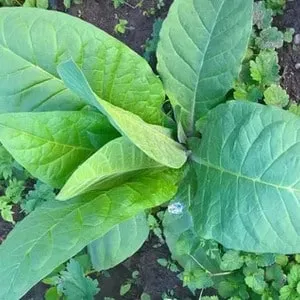 Advantages:
Advantages:
- Low maintenance
- High yield
- Disease resistance
- Suitable for all European climates
- Low nicotine content
- Versatile culinary uses
Disadvantage: High chlorophyll content necessitates sweating.
Reviews
Reviews of Virginia 202 are overwhelmingly positive. Growers praise its hardiness and excellent quality.
Conclusion
Virginia 202 is a must for true tobacco enthusiasts. Its unique sweet-fruity flavor satisfies even the most discerning palates. Growing it is easy, even for beginners, thanks to its high yield and disease resistance.







